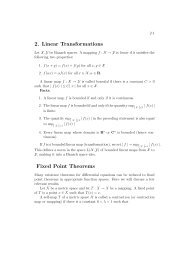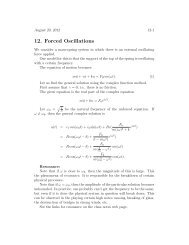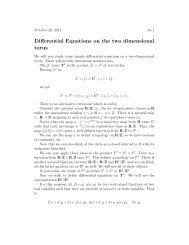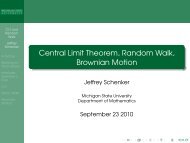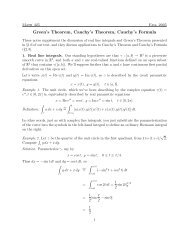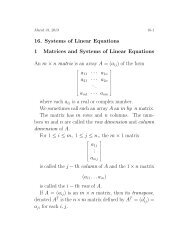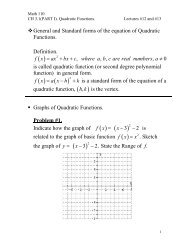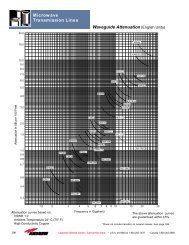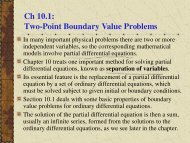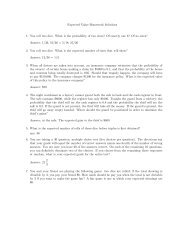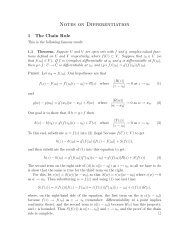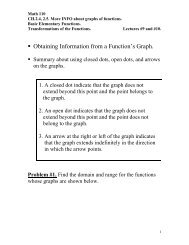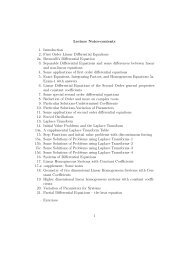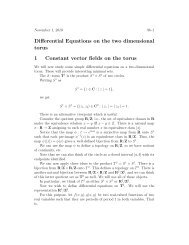16. Systems of Linear Equations 1 Matrices and Systems of Linear ...
16. Systems of Linear Equations 1 Matrices and Systems of Linear ...
16. Systems of Linear Equations 1 Matrices and Systems of Linear ...
Create successful ePaper yourself
Turn your PDF publications into a flip-book with our unique Google optimized e-Paper software.
March 31, 2013 16-7det(A) = det(A 1 , A 2 , . . . , A n ).Now, fix some i with 1 ≤ i ≤ n.Suppose that A <strong>and</strong> B are n × n matrices which only differ in theiri − th rows. That is, for j ≠ i, A j = B j . Let C be the matrix whosei−row is the sum aA i + bB i , where a <strong>and</strong> b are constants, <strong>and</strong> whoseother rows also equal the corresponding rows <strong>of</strong> A <strong>and</strong> B.Then,det(C) = a det(A) + b det(B)This property <strong>of</strong> determinants is called multi-linearity as a function <strong>of</strong>the rows.Replacing rows by columns, we also get the det(A) is multi-linear as afunction <strong>of</strong> the columns.5. If B is the matrix obtained from A by interchanging two rows thendet(B) = −det(A). One refers to this property by saying that det(A)is skew-symmetric as a function <strong>of</strong> the rows <strong>of</strong> A. The function a →det(A) is also skew-symmetric as a function <strong>of</strong> the columns <strong>of</strong> A.Let us compute some determinants.A =[2 −13 2], det(A) = 2(2) − 3(−1) = 7A =⎡⎢⎣2 −1 12 −3 41 2 2⎤⎥⎦ ,det(A) = 2(−6 − 8) − 2(−4) + −4 + 3 = −214 <strong>Systems</strong> <strong>of</strong> <strong>Linear</strong> <strong>Equations</strong>We will write vectors x = (x 1 , . . . , x n ) in R n both as row vectors <strong>and</strong> columnvectors.<strong>Matrices</strong> are useful for dealing with systems <strong>of</strong> linear equations.Suppose we are given a system <strong>of</strong> m equations in n unknowns



